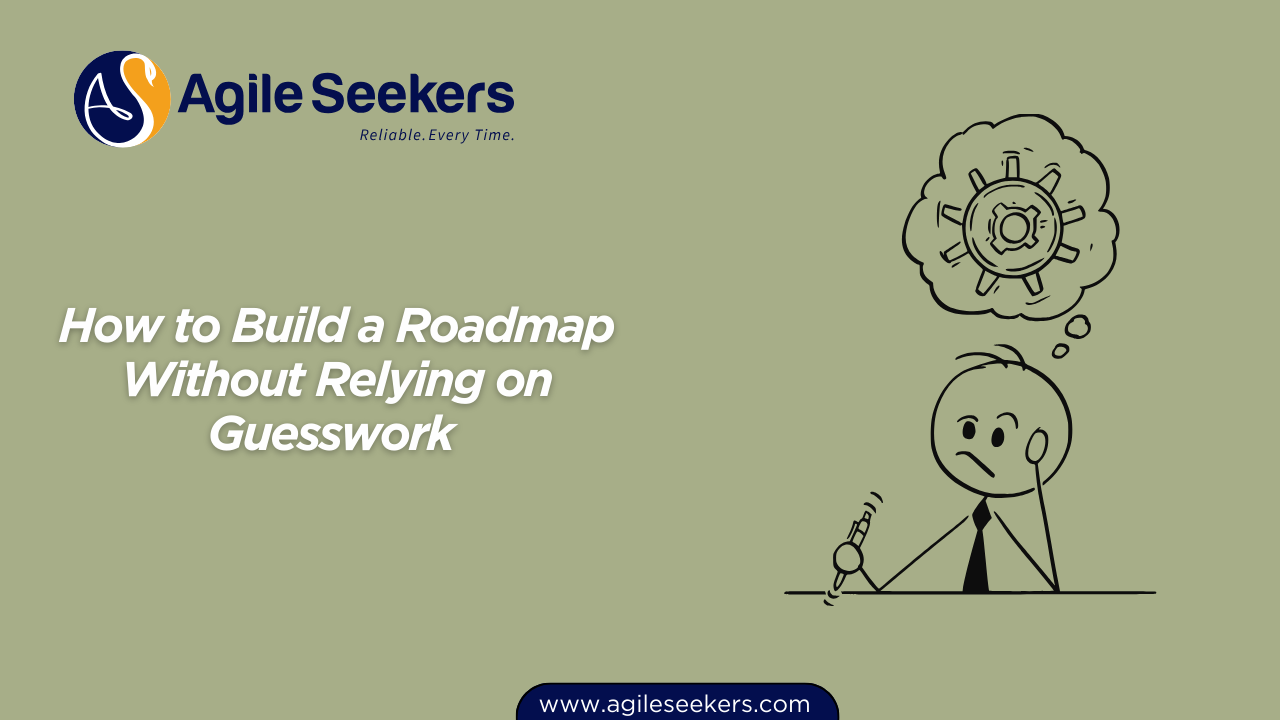How to Build a Roadmap Without Relying on Guesswork

Roadmapping looks simple until you start doing it for real. Assumptions creep in, opinions get treated like facts, and deadlines appear out of thin air. Before you know it, a roadmap becomes a collection of guesses instead of a grounded plan.
If you want a roadmap that stands strong when the work starts, you need a process that replaces intuition with insight and noise with clarity. Here’s how to build a roadmap that doesn’t rely on guesswork.
1. Start With a Clear Problem Statement
Most guess-driven roadmaps start with weak problem statements. Teams jump straight into feature ideas without agreeing on the actual problem. A strong problem statement defines who’s struggling, what they’re struggling with, why it matters, and what success looks like.
Getting good at framing problems is a core skill in leadership programs like Leading SAFe training, where economic thinking and systems awareness reduce the risk of assumption-led planning.
2. Gather Inputs From Real Signals, Not Opinions
Good roadmaps rely on real-world signals instead of internal assumptions. You want truth, not opinions. Useful signals include customer behavior, support data, usage analytics, NPS comments, market shifts, regulatory changes, and organizational constraints.
This habit of analyzing signals is part of the work taught in the POPM certification, where decisions are grounded in evidence.
3. Replace Gut Feel With Measurable Goals
Roadmaps fall apart when goals are vague. You need measurable outcomes such as reducing churn, increasing activation, or improving reliability. Avoid fuzzy targets. Use real numbers so teams know what they’re aiming for.
If you’re shifting toward outcome-driven planning, the SAFe Scrum Master training reinforces how teams stay focused on measurable results.
4. Scope Initiatives Based on Evidence, Not Optimism
Teams often underestimate effort because everything looks small at the start. Use evidence-based estimation, dependency mapping, and capacity modelling to avoid surprises. Lean on historical velocity and discovery spikes.
The SAFe Advanced Scrum Master certification helps you spot flow issues, hidden queues, and system constraints that impact roadmap accuracy.
5. Convert Everything Into Roadmap Themes
A roadmap should explain direction, not list every feature. Themes create clarity and allow flexibility as teams learn more. Good themes highlight outcomes like reducing friction, improving reliability, or strengthening compliance.
6. Validate Themes With Stakeholders Using Evidence
Stakeholders align faster when you anchor discussions in facts, not slides. Show the problem, the evidence behind it, expected gains, risks of not acting, and how a theme solves the problem. This creates alignment without political debates.
7. Order Priorities Using Economic Thinking
Guess-based prioritization usually comes from loud voices, not logical decisions. Use WSJF, cost of delay, or impact vs effort to prioritize. Economic thinking removes bias and helps leaders make objective trade-offs.
The SAFe Release Train Engineer certification goes deep into economic decision-making across teams and trains.
8. Bring Data Into Every Layer of Planning
Data removes guesswork. Use metrics to shape roadmap themes, quarterly goals, sprint goals, acceptance criteria, and discovery outcomes. Even simple metrics like adoption rates or lead time change the quality of conversations.
It’s a practice reinforced again and again in SAFe Scrum Master certification sessions, where teams learn to improve flow using data.
9. Introduce Discovery Work as a First-Class Citizen
A roadmap without discovery is just a list of assumptions dressed up as plans. You need interviews, prototypes, architecture spikes, experiments, and data exploration. Discovery answers whether a problem is worth solving before you commit to delivery.
External frameworks like the Continuous Discovery Habits approach and the Lean Startup loop fit naturally into an evidence-led roadmap.
10. Show Teams a Roadmap Built on Constraints, Not Wishes
Be upfront about constraints. Every team works within tech, compliance, security, and resource limits. A transparent view of constraints helps teams avoid unrealistic expectations and brings focus to what's actually possible.
11. Build Alignment Through Regular Review Sessions
A strong roadmap doesn’t sit untouched. It evolves through quarterly reviews, monthly theme reviews, sprint reviews, and dependency conversations. These sessions ensure teams stay aligned and new information shapes the plan.
Cadence-based planning is a core practice in Leading SAFe and keeps teams moving together instead of drifting apart.
12. Keep the Roadmap Flexible Enough to Adapt Without Breaking
A good roadmap feels stable but not rigid. You should be able to shift priorities, replace themes, adjust sequencing, or incorporate new data without throwing everything into chaos.
Dual-track Agile concepts, inspired by Teresa Torres and other product thinkers, help teams balance discovery and delivery without losing momentum.
13. Communicate the Roadmap With Clarity and Honesty
People trust roadmaps when they understand them. Be clear about what’s certain, what’s tentative, what depends on other teams, and what evidence supports your choices. Transparency builds confidence in the direction.
14. Evolve the Roadmap Based on Learning, Not Assumptions
Your roadmap becomes truly assumption-free when it’s shaped by real learning—delivery data, experiment outcomes, customer insight, and market changes. Each cycle makes the roadmap smarter and removes the need for guesswork.
Final Thoughts
A roadmap built without guesswork is the result of discipline, not luck. You ground decisions in signals, not opinions. You use measurable outcomes, not feel-good goals. You validate before committing. You learn and adapt through structured cadence.
If you want to strengthen your ability to operate this way at scale, programs like Leading SAFe, POPM certification, SAFe Scrum Master training, SAFe Advanced Scrum Master certification, and SAFe Release Train Engineer certification offer the structure and depth to support this approach.
When decisions depend on evidence instead of assumption, your roadmap stops being a guess—and starts becoming a strategy.
Also read - How to Spot Assumptions Hidden in Your Roadmap
Also see - How to Build a User Story Map That Actually Reflects Real User Journeys




















